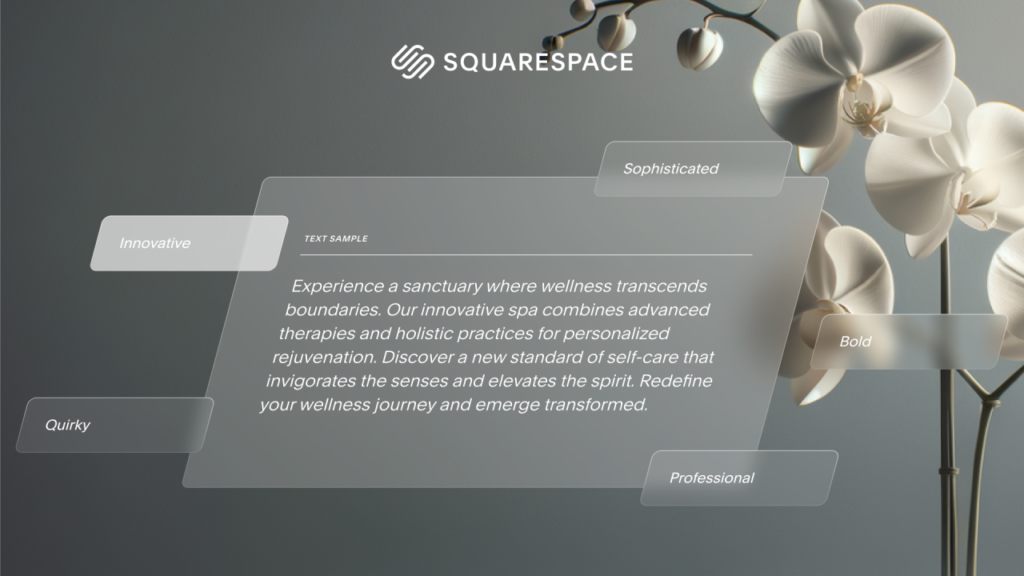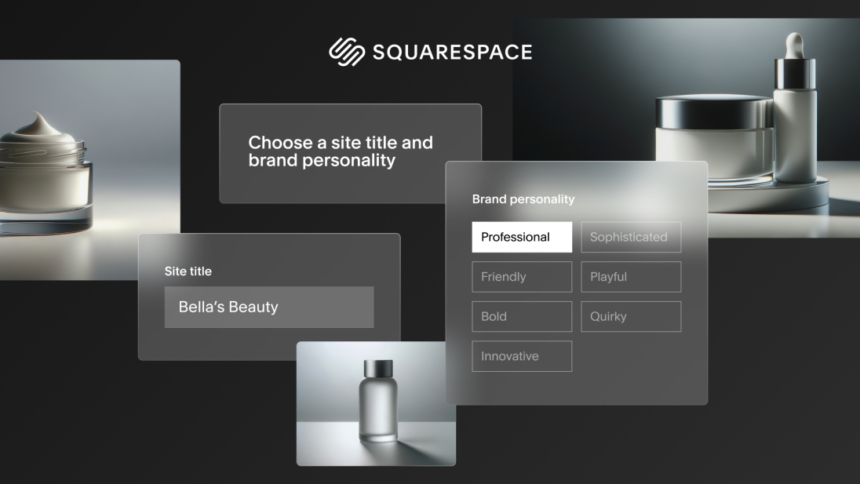In a world where generative AI is rapidly transforming industries, will these tools genuinely help people build better websites, or will they flood the internet with generic, uninspiring content? Squarespace is betting on the former with the introduction of its new generative AI-powered platform, Design Intelligence.
While the debate on AI’s impact on creativity continues, Squarespace is taking a different approach. Instead of just following the trend, it’s curating the technology with an emphasis on design integrity and user empowerment. I recently had the chance to sit down with Paul Gubbay, Chief Product Officer at Squarespace, to talk about their broader AI strategy and how Design Intelligence is designed to shape the future of website building.
The AI Challenge: More Than Just Another Tool
When most people think of AI-driven website creation, they imagine a rigid, prompt-based system—one that delivers a functional but impersonal result. Squarespace’s approach, however, goes far beyond that. Gubbay shared a common scenario: competitors’ AI tools being prompted to create a simple spa website, which often results in clunky, disjointed sites that feel more like placeholders than polished products. This was a setup for Gubbay’s demo of Design Intelligence, where the output, despite being AI-generated, had a professional, bespoke quality—inviting further customization.
Gubbay emphasized that Squarespace’s mission is not to simply integrate AI for novelty’s sake but to elevate the website-building process. “How do we take these latest technologies and use them to help our customers stand out?” he said, contrasting their focus with competitors who are more concerned about using AI to differentiate themselves rather than serve their users.
Balancing AI Automation and Human Customization
One of the biggest questions in AI website generation is: where should AI take the reins, and where should humans still have control? Gubbay’s answer is clear. Squarespace wants its customers to have the best of both worlds—seamless automation and meaningful control.
“We’ve taken our time to think about how these things come together,” Gubbay said. The goal, he explained, is to allow users to recognize the right design when they see it and then build upon it without feeling restricted. It’s not about fully handing over the creative process to AI but creating what Gubbay calls a “playground” where users can explore, modify, and enhance the AI-generated foundations.
Squarespace isn’t interested in turning website building into a series of chatbot-style commands. It’s about visual feedback—users need to see what they’re working with and tweak it in real-time. This approach allows customers to “play” with layouts, text, images, and designs until they find something that feels uniquely theirs.
Curation: The Secret Sauce Behind Squarespace’s AI
What sets Squarespace apart isn’t just the use of generative AI but how it’s used. As Gubbay explained, curation plays a crucial role in Squarespace’s design process. While many platforms are scrambling to adopt generative AI, Squarespace has focused on integrating it thoughtfully, ensuring that design curation remains central to its tools.
“Our CEO says this sometimes, and I think it’s true: AI text generation is great, but you could also go to OpenAI or ChatGPT, type something, and copy and paste it. The challenge lies in knowing how to prompt the engine to get the right output,” Gubbay explained.
This is where Squarespace’s proprietary approach comes into play. The company has developed a highly specific way of prompting AI models to generate content—whether it’s text, images, or color palettes—that aligns with their brand’s aesthetic and their users’ needs. Their curation engine fine-tunes the results to ensure that what gets presented is polished, professional, and in line with Squarespace’s design philosophy. It’s an ongoing process of tagging, filtering, and feeding content back into the system to ensure customers get something exceptional right out of the box.
Leveraging AI Without Losing Design Integrity
While Squarespace may not be in the business of developing its own language models, it’s leveraging partnerships with Google, OpenAI, and Anthropic to deliver high-quality AI-generated content. But, as Gubbay pointed out, the true value lies in how they curate and present that content.

For instance, Squarespace’s AI-generated imagery is designed to look and feel very much in line with the company’s brand—a result of carefully curated prompts and a keen understanding of what their customers need. This curation process is what ensures that the AI doesn’t just generate content—it generates the right content.
“People come to Squarespace because they believe design makes a difference,” Gubbay said. And while integrating more generative AI tools might make the process faster, the end goal is to ensure the websites created still feel bespoke and uniquely aligned with the user’s vision.
A Tool for Designers, Not a Replacement
With the increasing sophistication of AI tools, it’s natural to wonder how they’ll affect professional designers—especially those who’ve long relied on Squarespace’s platform. For Gubbay, the answer is simple: AI is not here to replace designers; it’s here to enhance their capabilities.
Gubbay encourages designers to view AI as a tool that can help bring their visions to life faster. The key, he says, is learning to leverage AI in a way that complements their skills. Whether it’s generating a starting point for a layout or suggesting a color scheme, AI can provide valuable inspiration, allowing designers to focus on the more intricate, creative aspects of their work.
During a recent Circle Day event with designers, Gubbay shared that one of the big takeaways was how AI can streamline the design process, enabling professionals to spend more time refining their work instead of starting from scratch. “We would never replace them,” he said, reaffirming that human creativity remains irreplaceable.
The Future of AI in Website Design
So, what does the future hold for AI and website design? For Squarespace, it’s about empowering users—whether they’re casual users or professional designers—with tools that make the process faster, more intuitive, and ultimately more creative.
As more generative AI features are integrated into platforms like Squarespace, the expectation is that websites will not only be easier to build but will look even better. “We’re going to give people the tools to get even better results faster,” Gubbay said, ensuring that each website feels personal and reflects the user’s brand and vision.
For now, Design Intelligence and its curated AI tools are poised to change the game for website builders, striking a delicate balance between automation and creativity. Squarespace’s commitment to taste, design, and curation ensures that no matter how much AI is involved, the human touch will always be front and center.
Conclusion:
As AI continues to evolve, Squarespace is proving that design quality and personalization don’t have to be sacrificed for the sake of convenience. By embedding curation into the very core of its AI tools, Squarespace is offering a platform where users can not only build websites quickly but also feel confident that the final product will be something they’re proud to call their own.










